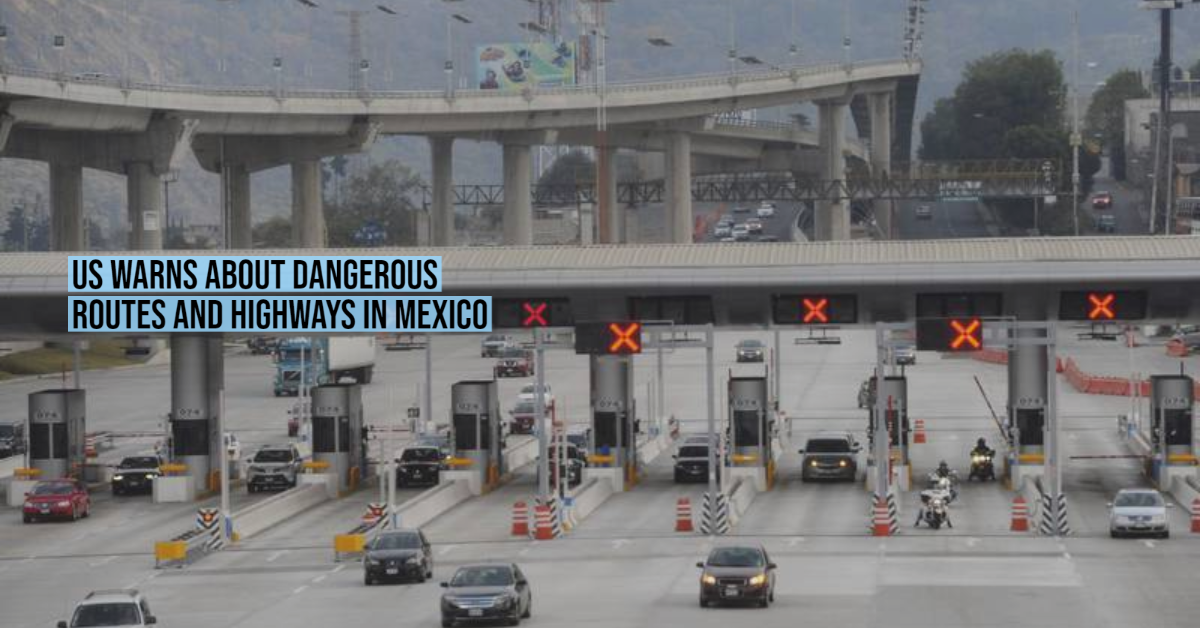The United States Department of State warned its government officials about the use of certain dangerous routes and highways in Mexico.
According to the statement issued in mid-March, violent crimes occur in these areas, such as homicides, kidnappings, and vehicle thefts, for which they asked travelers to avoid five states, reconsider traveling in another 11, take greater precautions in 14 and do it moderately in two others.
The states in which it is definitely recommended not to travel due to the high incidence of crime are Colima, Guerrero, Michoacán, Sinaloa, and Tamaulipas. While the government recommends avoiding or taking the following routes in states where travel should be reconsidered.
Baja California
The Mexicali Valley should be avoided due to violence between rival cartels. You can use highways 2 and 2D to travel between Mexicali, Los Algodones, and San Luis Río Colorado, highways 1 and 8 to travel to and from the Mexicali Airport, and highway 5, all during the day.
Chihuahua
You can travel to the Ciudad Juárez area as long as you avoid the Anapra route.
It is recommended to travel to the Nuevo Casas Grandes area only during the day, accessing Ojinaga via Highway 67 and entering through the port of entry in Presidio, Texas. While entry to Palomas must be through the port of entry in Columbus, New Mexico. The Copper Canyon and other areas of Chihuahua are prohibited.
Durango
Travel on the west and south side of Federal Highway 45 is prohibited due to gang activity.
Guanajuato
Traveling on Federal Highway 45D, Celaya, Salamanca, and Irapuato is prohibited. Restrictions are lifted for San Miguel de Allende, the city of Guanajuato, and other surrounding areas.
Jalisco
Travel is not allowed on the border between Jalisco and Michoacán, Federal Highway 80 south of Cocula, and Highway 544 between Mascota and San Sebastián del Oeste. While there are no restrictions for the Guadalajara Metropolitan Area, Puerto Vallarta (including neighboring Riviera Nayarit), Chapala, and Ajijíc.
Nayarit
You cannot travel to the capital Tepic or the port of San Blas, but you can go to the Riviera Nayarit (including Nuevo Vallarta, Punta Mita, Sayulita and Bahía de Banderas ), as well as Santa María del Oro.
Oaxaca
Government employees may not travel to the area of Oaxaca bounded by Federal Highway 185D to the west, Federal Highway 190 to the north, and the Oaxaca-Chiapas border to the east. This includes the cities of Juchitán de Zaragoza, Salina Cruz and San Blas Atempa.
Nor can you use Federal Highway 200 between Pinotepa and the border between Oaxaca and Guerrero.
The following tourist areas can be visited without any problem: Oaxaca City, Monte Albán, Puerto Escondido, and Huatulco.
Sonora
You can travel between the ports of entry in Nogales and Hermosillo via Federal Highway 15; Puerto Peñasco and the Lukeville-Sonoyta port of entry via Federal Highway 8; closest port of entry to San Luis Río Colorado, Cananea and Agua Prieta, but cannot go beyond the city limits.
Travel to the triangular region west of the Port of Mariposa, east of Sonoyta, and north of the municipality of Altar is prohibited; use taxi services in Nogales; the areas east of Federal Highway 17, the highway between Moctezuma and Sahuaripa, State Highway 20 between Sahuaripa, and the intersection with Federal Highway 16.
Also unusable are Federal Highway 16 and east of Federal Highway 15 (south of Hermosillo), as well as to all points south of Guaymas, including Empalme, Guaymas, Obregón, and Navojoa.
San Carlos Nuevo Guaymas and Álamos are free of restrictions.
Zacatecas
South of Federal Highway 45 and west of Federal Highway 23 and the town of Fresnillo are prohibited although employees may travel on Federal Highways 45 and 23 through Fresnillo without stopping.
The United States Department of State warned its government officials about the use of certain dangerous routes and highways in Mexico.
According . . .












